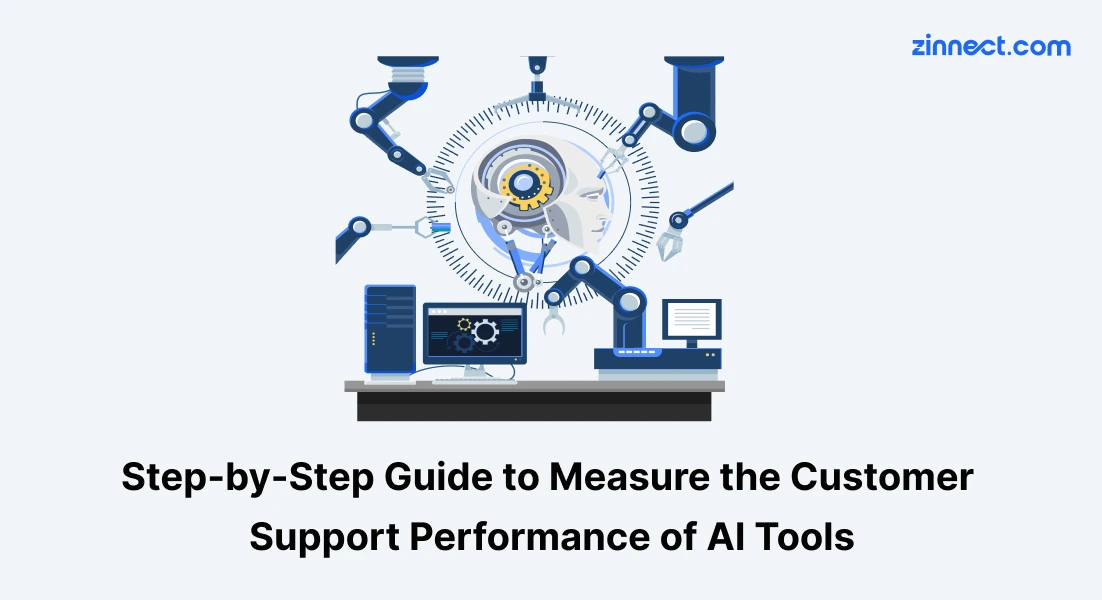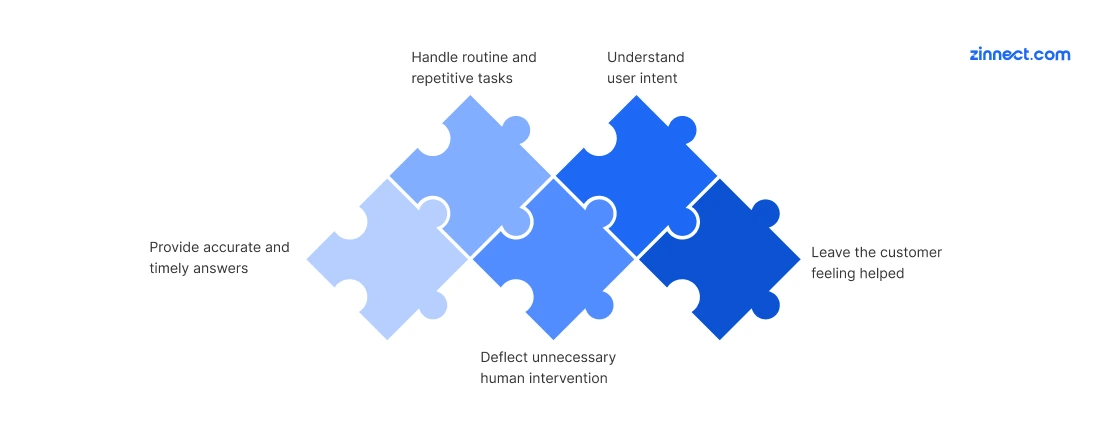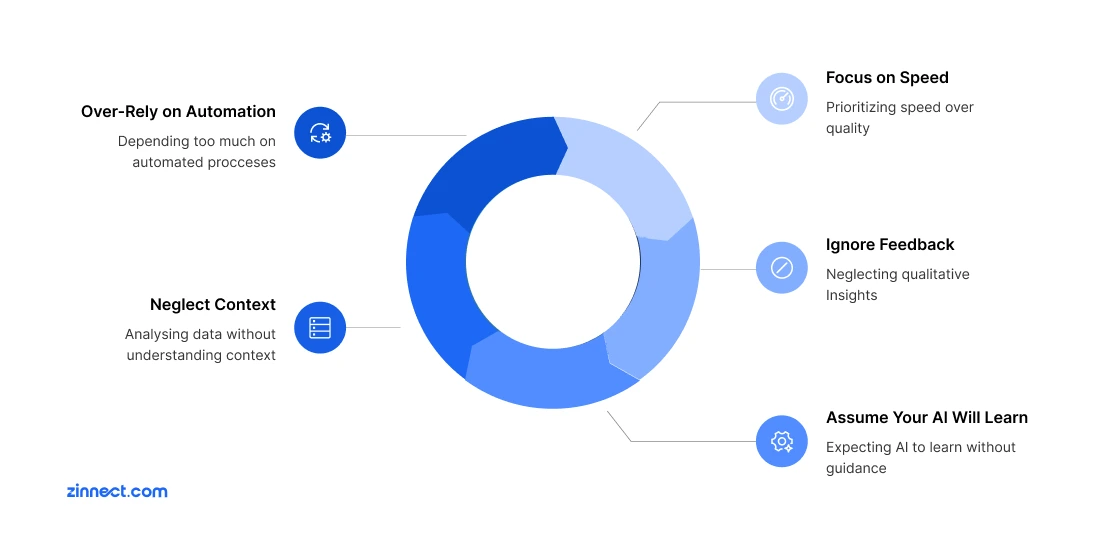Step-by-Step Guide to Measure the Customer Support Performance of AI Tools

In today’s competitive customer service landscape, AI tools like chatbots, virtual assistants, and automated helpdesks are no longer a luxury, they’re a necessity. But here’s the catch: not all AI support is created equal. To truly benefit from these tools, small businesses must go beyond implementation. They must measure AI support performance accurately and consistently.
This guide will walk you through everything, from understanding what AI performance really means, to identifying key performance indicators (KPIs), using helpful tools, avoiding common pitfalls, and most importantly, getting started in a way that makes sense for your business.
What Does ‘AI Support Performance’ Really Mean?
At its core, measuring AI support performance means understanding how well your AI tools serve your customers. It’s not just about speed or cost, it’s about effectiveness, consistency, and satisfaction.
A high-performing AI support system should:

It’s also about striking a balance between automation and the human touch. AI should complement your support team, not replace it.
The best-performing AI tools aren’t necessarily the flashiest ones, they’re the ones that fit seamlessly into your workflow, free up your human agents, and make your customers feel valued.
Why Measuring AI Support Is a Long-Term Game
One of the biggest misconceptions small businesses face is treating AI implementation as a one-time setup. The truth is, just like a new employee, your AI support system needs ongoing training, consistent evaluation, and clear feedback loops to improve.
Think of it like this: Your AI chatbot isn’t just a tool, it’s part of your frontline team. You wouldn’t hire a support rep and never review their performance, right? The same principle applies here. You need to check in on your AI system regularly, help it learn from its mistakes, and make sure it continues to align with customer needs as your business grows.
Also, customer expectations evolve over time. What seemed like a great automated response a year ago might now feel outdated or robotic. Regular performance measurement ensures your AI adapts to changing customer behaviors, communication styles, and service expectations.
Key AI Support KPIs Every Business Should Track
If you can’t measure it, you can’t improve it. Here are some AI KPIs (Key Performance Indicators) that will help you measure your tool’s actual value:
1. First Response Time (FRT)
This is the time it takes for the AI to respond to a query. While AI is expected to be instant, some tools have slight delays depending on server load, API performance, or the complexity of the question.
2. Resolution Rate
What percentage of customer issues does your AI tool resolve on its own? A high resolution rate suggests your AI is well-trained and effective.
3. Customer Satisfaction Score (CSAT)
Usually collected via a short survey post-interaction. “How satisfied were you with this support?” is often rated on a scale of 1–5.
4. Escalation Rate
This tells you how often the AI fails to resolve an issue and needs to hand over the conversation to a human. A very high rate might indicate poor training or unclear customer intents.
5. Average Handling Time (AHT)
While speed isn’t everything, this KPI measures how efficiently the AI wraps up conversations. AHT includes time spent understanding the problem and suggesting solutions.
6. Deflection Rate
This metric shows how many customer interactions were handled fully by the AI without being passed on to a human support agent.
7. Intent Recognition Accuracy
How well does your AI understand what the customer is actually asking? Intent recognition is the backbone of chatbot analytics and natural language processing.
8. Sentiment Analysis Score
Advanced tools can detect whether a customer is angry, frustrated, or happy. This score helps gauge the emotional intelligence of your AI support system.
Pro Tip: Don’t rely on one KPI alone. Use a mix of metrics to get a well-rounded view of performance.
The Role of AI in Enhancing Agent Productivity
AI tools aren’t just for handling customer chats independently, they’re also powerful assistants to human agents. When used well, AI can:
- Pre-fill customer data before an agent steps in.
- Summarize past interactions so agents don’t have to sift through logs.
- Suggest next steps or solutions in real time, based on the conversation.
This means your human agents spend less time on repetitive tasks and more time solving complex issues that truly need a human touch. When tracking AI performance, look for signs that your agents are working more efficiently: shorter resolution times, fewer escalations, and improved CSAT after human handover.
Step-by-Step Process to Measure AI Performance
Step 1: Define Your Goals
Before you dive into metrics, be clear about what success looks like. Do you want to lower support costs, respond faster, or improve satisfaction?
Step 2: Choose the Right KPIs
Select 3–5 KPIs that align with your goals. For example, if you want speed and efficiency, track First Response Time (FRT), (Average Handling Time (AHT), and Resolution Rate.
Step 3: Set Up Analytics Tools
Use dashboards with tracking capabilities. Look for built-in analytics within your current platform to avoid needing extra integrations.
Step 4: Monitor Daily or Weekly
Schedule time to review these dashboards regularly. Create reports to track trends and improvement.
Step 5: Interpret the Data
A low Customer Satisfaction (CSAT) score doesn’t always mean your AI failed. Dig deeper: Was it a delay? Wrong answer? Tone issue?
Step 6: Iterate and Improve
Use the insights to train your AI better. Feed it more data, update the responses, and rework conversation flows.
Step 7: Combine AI + Human Support
Don’t forget the human element. AI should handle routine queries. Complex or emotional cases should go to your human agents.
Customizing AI for Your Industry
Another key consideration when evaluating AI support performance is how well it aligns with the specifics of your industry. A chatbot that works well for a retail business may fail miserably in healthcare or finance, where questions are more nuanced and regulations stricter.
That’s why part of your performance measurement strategy should include:
- Industry-specific training data: Feed your AI with questions and vocabulary specific to your niche.
- Use case mapping: Make sure your AI is equipped to handle the most common (and valuable) queries in your domain.
- Contextual awareness: For example, a hotel chatbot should understand seasonal booking trends or room types, while an eCommerce bot should be great with order tracking and returns.
The more tailored your AI is to your business context, the better it will perform—and the easier it will be to evaluate that performance accurately.
How Often Should You Audit AI Support?
Auditing your AI support system isn’t a one-time task. Just like customer expectations, technology and language patterns evolve. Here’s a recommended cadence:
- Monthly check-ins: Focus on basic KPIs and qualitative feedback.
- Quarterly reviews: Dive deeper into trends, escalation patterns, and sentiment analysis.
- Annual strategy refresh: Revisit your support goals. Does your AI still align with your current customer journey?
You can also set performance thresholds. For example, if your resolution rate drops below 60% in a week, it might trigger a deeper review regardless of schedule.
Pro Tip: Build a simple audit checklist, including CSAT changes, keyword mismatches, and failed intents. Over time, you’ll develop your own AI playbook.
Common Mistakes to Avoid
Even well-meaning teams can trip up when measuring AI support performance. Here are some pitfalls to watch out for:

- Focusing only on speed: Fast responses don’t matter if they’re wrong or unhelpful.
- Ignoring qualitative feedback: Customer comments are gold. Use them to tweak AI scripts.
- Assuming your AI will “learn on the job”: AI needs structured training and ongoing optimization.
- Neglecting context in analytics: A dip in performance might be seasonal (e.g., more queries during a sale).
- Over-relying on automation: There will always be cases where human empathy is needed.
How Small Businesses Can Start Simple
If you’re a small business, it’s easy to get overwhelmed. But you don’t need a tech team to get started. Here’s how to ease into measuring AI support performance:
Use Tools with Built-in Support:
Pick platforms that come with guided onboarding and pre-built dashboards (like Tidio or Freshchat).
Ask for Feedback Often:
Use short surveys like “Was this answer helpful?” at the end of AI chats. That’s valuable data you can act on.
Update Regularly:
Make it a monthly routine to review performance and make minor tweaks. Small changes often have a big impact.
Scale Slowly:
Once you’re comfortable with basic tracking, move to sentiment analysis and advanced chatbot analytics.
Learn from Others:
Follow AI leaders and CX influencers like Blake Morgan or Shep Hyken on LinkedIn. They often share practical insights for small businesses.
Final Thoughts
Measuring AI support performance isn’t just a technical chore, it’s the secret to better customer service, higher satisfaction, and smarter scaling. By tracking the right AI KPIs, using intuitive tools, and regularly refining your approach, your business can turn AI into a true customer experience asset.
Remember: Good AI doesn’t just answer questions. It understands people.
Ready to go deeper and learn more about Scaling Customer Support with AI?Click here.
Frequently Asked Questions
If you’re just beginning, focus on Resolution Rate and CSAT. These give you a clear picture of effectiveness and customer sentiment.
If you’re seeing a high escalation rate and low satisfaction scores, it’s a sign that your AI isn’t performing well and needs improvement.
Yes! Tools like Tidio or Botpress offer free tiers with basic analytics. You can also manually track data in spreadsheets.
No. The best support systems use AI to handle repetitive queries and escalate complex ones to human agents.
At least once a month. Update based on new queries, customer feedback, and seasonal trends.